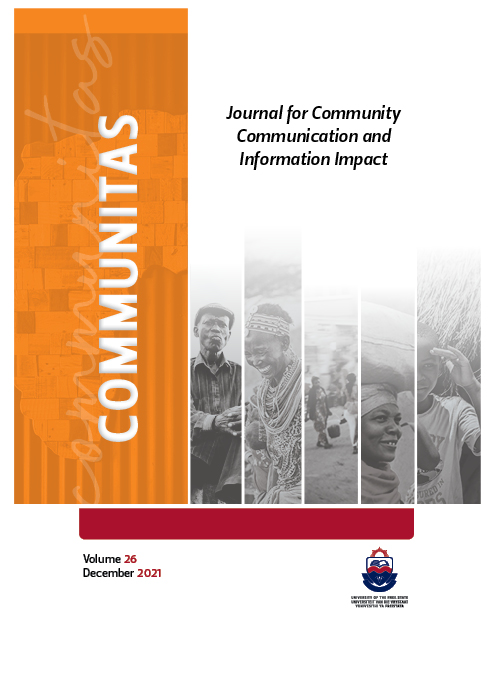Covid-19 information gaps among the disadvantaged communities: The case of the Deaf and Limited English Proficiency communities in Zimbabwe
DOI:
https://doi.org/10.38140/com.v26i.5499Keywords:
Health communication, Science communication, Development communication, Covid-19 information, Risk communication, Disadvantaged communities, Deaf community, Limited English ProficiencyAbstract
Worldwide public health authorities are taking action to contain Covid-19. While the bulk of research on the pandemic focuses on understanding the spread and seeking a cure for the virus from a virology perspective, research of the same magnitude should also focus on the risks of the pandemic for society, particularly among disadvantaged groups. This study adopted a community-centred approach to information and health rights and utilised the case study approach to investigate the quality and access to Covid-19 information, care and treatment by the Limited English Proficiency (LEP) and the Deaf communities in Zimbabwe. More than 60% of Covid-19 messages communicated in Zimbabwe’s mainstream media do not cater for the needs of these disadvantaged groups. Brochures, videos and infographics, for instance, appear in English, yet there is a significant LEP population in Zimbabwe. As regards the Deaf community, videos, conversations and interviews with health specialists, which rarely appear in mainstream public media, include Zimbabwean Sign Language interpretation. In this case, the choice of language and medium used to communicate vital Covid-19 messages in mainstream public media may pose language barriers to effective and equitable health information for these vulnerable groups. What this reality hints at is that public communication that does not discriminate is a necessity to allow all members of the community to fight the spread of Covid-19 and hence, reduce its potential risks.
Downloads
##submission.downloads##
Published
Issue
Section
License
Copyright (c) 2022 Dr Paul Svongoro, Tawanda Matende

This work is licensed under a Creative Commons Attribution 4.0 International License.
All articles published in this journal are licensed under the Creative Commons Attribution 4.0 International (CC BY 4.0) license, unless otherwise stated.









